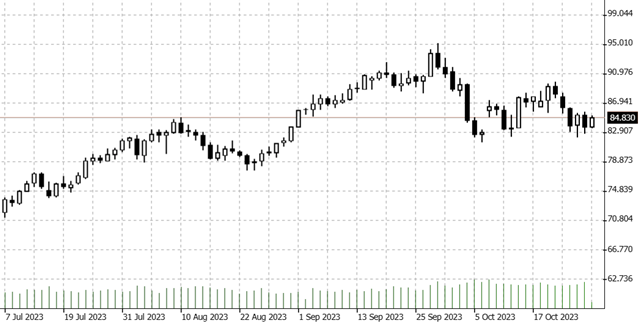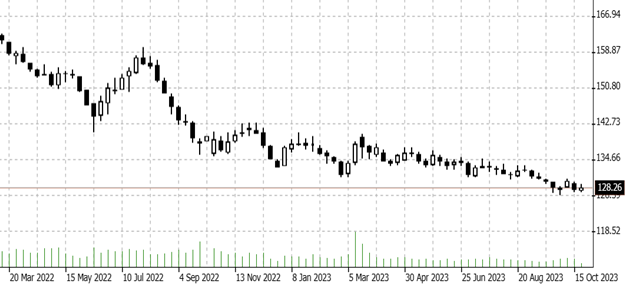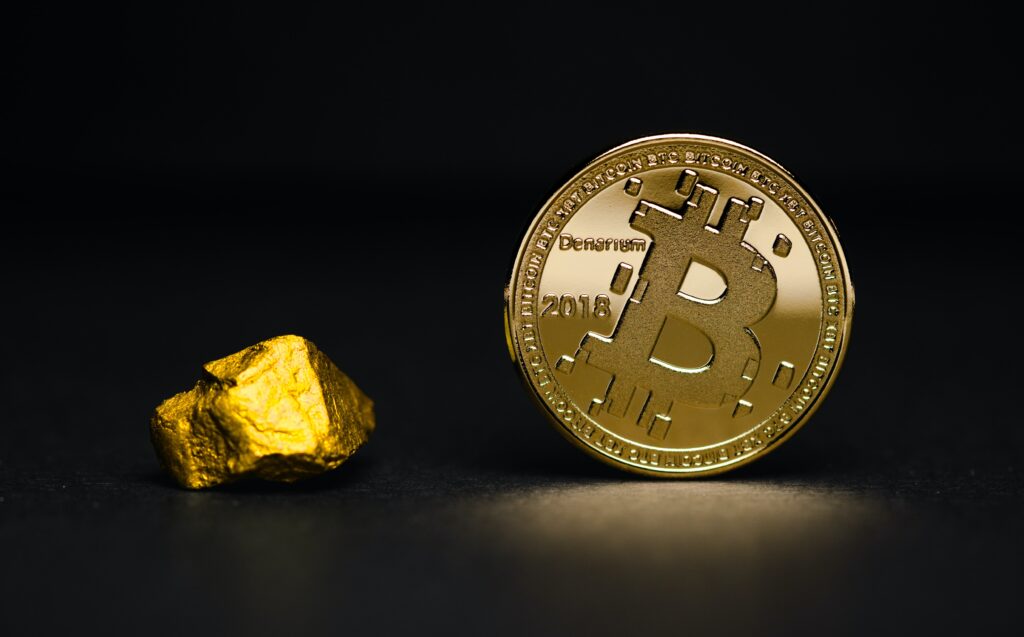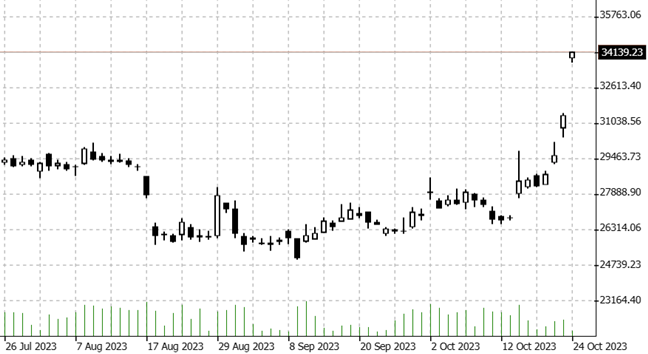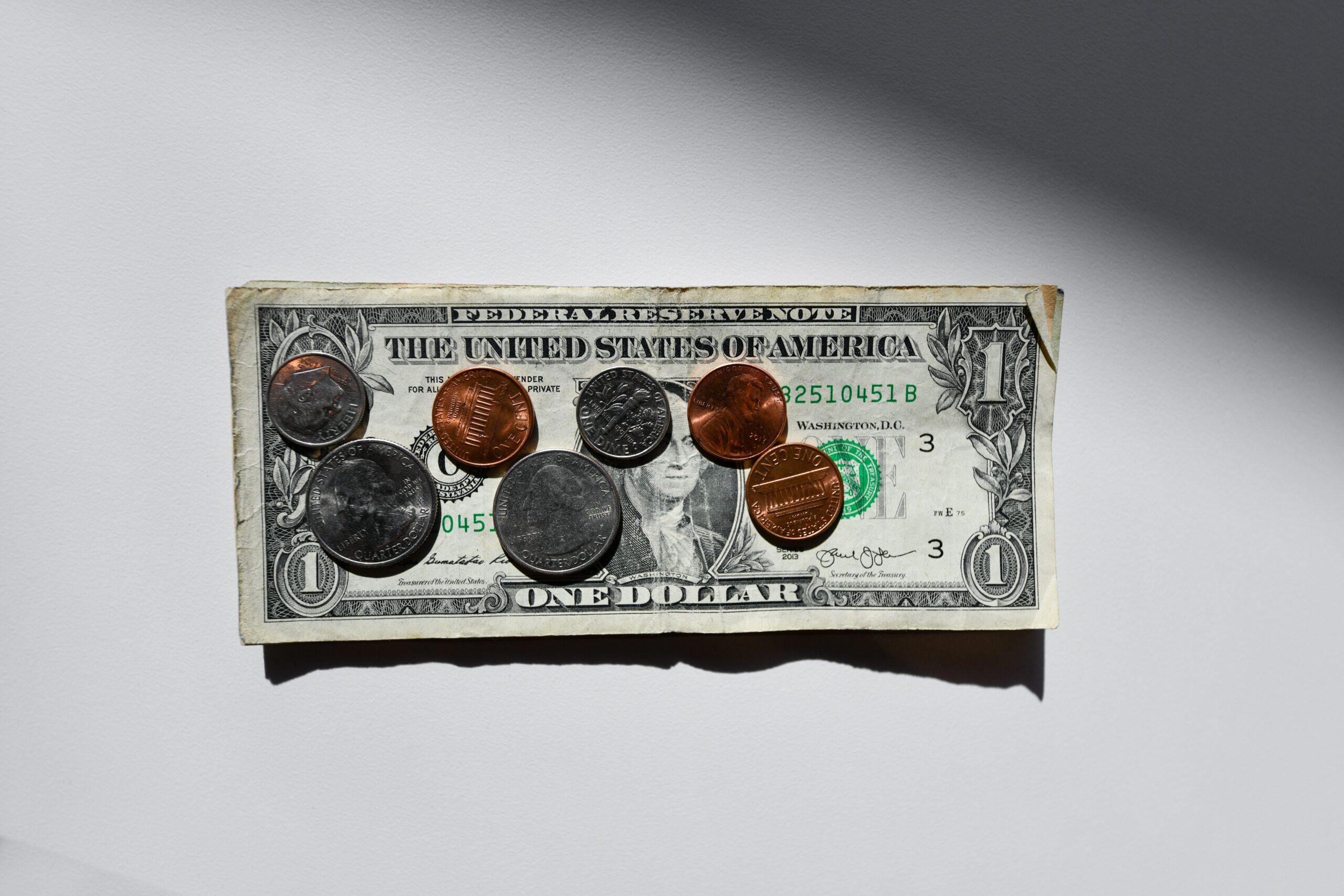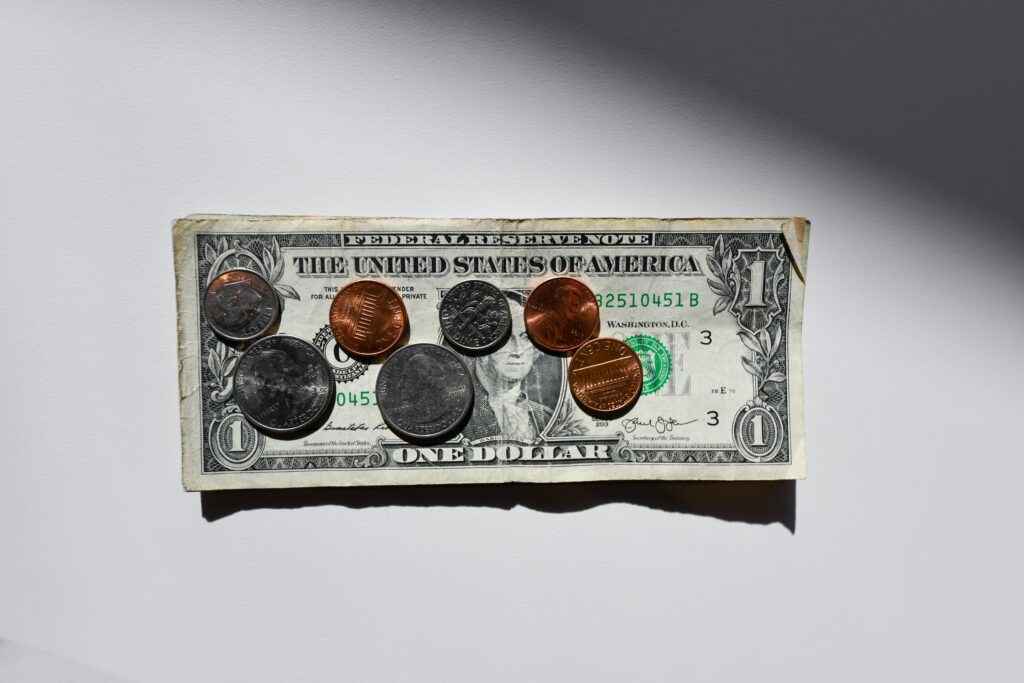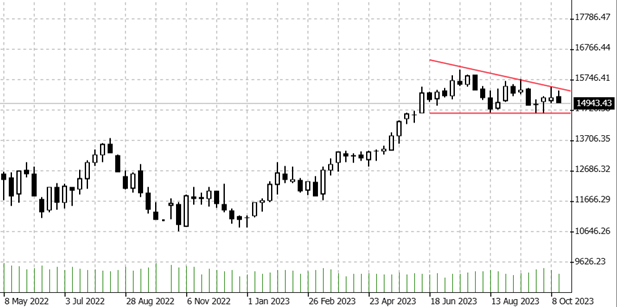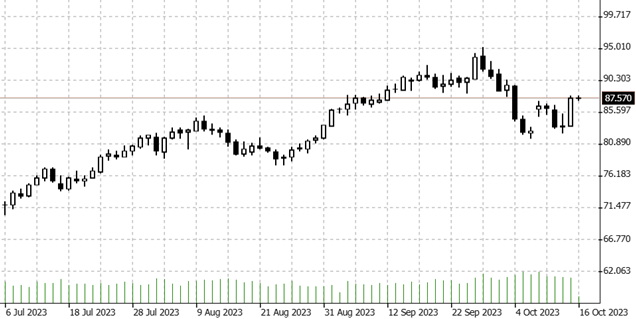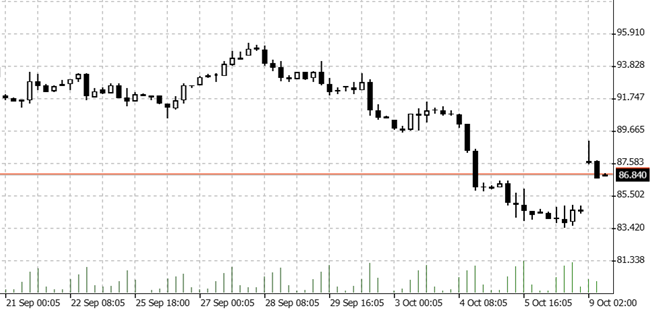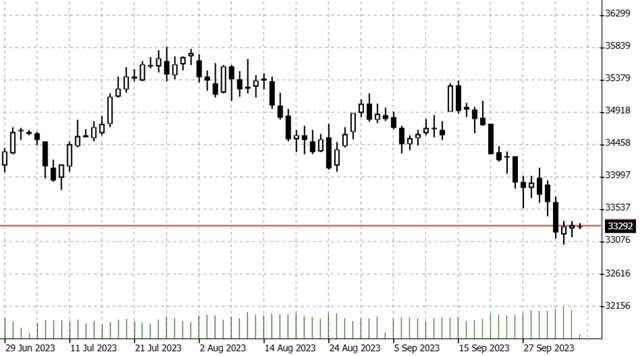

02.11.2023 – The Federal Reserve has extended the interest rate pause. Most analysts had expected this. However, the rather soft tone of Fed Chairman Jerome Powell caused a small surprise.
First, the facts: The U.S. Federal Reserve left interest rates unchanged for the second time in a row. The key interest rate thus remains in the range of 5.25 to 5.5 percent. But that doesn’t explain the movements in the financial market: the yield on the two-year U.S. Treasury bond slipped back below 5 percent. The S&P 500 closed at its session high yesterday and has held there ever since, here is the hourly chart.

Source: Bernstein Bank GmbH
While Powell says the second pause is not an indication that key interest rates will remain unchanged at the last Fed meeting of the year in December. That’s because he and his colleagues on the monetary policy-making body are not yet confident that monetary policy is tight enough to reach the 2 percent inflation target as soon as possible.
No rate cut yet
And further: No one is yet thinking of an interest rate cut, as some economists have already called for. Because: “Recent indicators suggest that economic activity expanded at a strong pace in the third quarter. Job gains have moderated since earlier in the year but remain strong, and the unemployment rate has remained low. Inflation remains elevated.” The reduction of the bond portfolio, which had been built up in the course of the quantitative easing policy, also continued as planned.
Softer tones
But there was more. Bill Baruch of Blue Line Futures peeled the essence from the Fed chief’s statement, saying Powell was now speaking in a very balanced way about the risks between too much and too little Fed action. Overall, he said, the tone had become quite “dovish.” That’s because Powell had also explained that wage growth had slowed significantly over the past 18 months. And that the assessment for a neutral interest rate has now turned rather restrictive – which probably means that this rate could well be somewhat lower than previously assumed.A neutral rate is the one that allows economic growth with subdued inflation.
Hoping for the year-end rally
The Blue Line Futures expert went on to say that Powell sounded as if the Fed was “closer to the endgame” on the subject of high interest rates – provided there was no surprise in the economic data in the coming weeks. In fact, tomorrow’s Friday labor market numbers could already kick off a seasonal rally. The consensus is for an increase in the job market of 183,000 jobs.
Baruch was also specific: He is currently keeping an eye on U.S. Treasuries, especially since investment legend Stanley Druckenmiller has spoken of interest rates at the short end being at the end of a top. In other words, short-dated bonds could rise soon. Baruch also saw opportunities in gold, with a good bottom forming at $1,965 to $1,975.
So keep an eye on the real-time news – Bernstein Bank wishes you successful trades and investments!
_________________________________________________________________________________________________________________________________________________________________
The content of this publication is for general information purposes only. In this context, it is neither an individual investment recommendation or advice nor an offer to purchase or sell securities or other financial products. The content in question and all the information contained therein do not in any way replace individual investor- or investment-oriented advice. No reliable forecast or indication for the future is possible with respect to any presentation or information on the present or past performance of the relevant underlying assets. All information and data presented in this publication are based on reliable sources. However, Bernstein Bank does not guarantee that the information and data contained in this publication is up-to-date, correct and complete. Securities traded on the financial markets are subject to price fluctuations. A contract for difference (CFD) is also a financial instrument with leverage effect. Against this backdrop, CFD trading involves a high risk up to the point of total loss and may not be suitable for all investors. Therefore, make sure that you have fully understood all the correlating risks. If necessary, ask for independent advice. CFDs are complex instruments and are associated with the high risk of losing money quickly because of the leverage effect. 68% of retail investor accounts lose money trading CFD with this provider. You should consider whether you understand how CFD work and whether you can afford to take the high risk of losing your money.7





